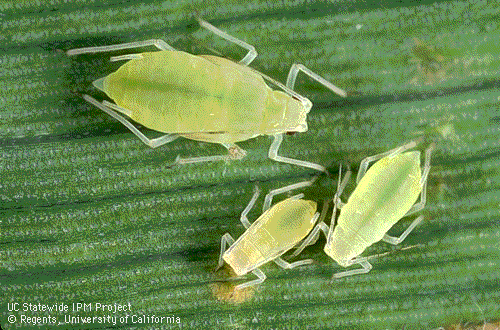Scientific name: Aphids
Scientific classifi cation:
Phylum: Arthropoda
Class: Insecta
Order: Homoptera
Family: Aphididae
What do they look like? Aphids are small insects, varying in size from 1 to 10 mm. They have
soft bodies with long, spindly legs. There is normally a pair of thin turrets projecting from
the animal’s back end, which secrete a waxy substance. In each species there are winged and
non winged forms. The mouth parts are formed into a long, thin structure called the rostrum,
which is held under the body when the animal is not feeding. The eyes are small and relatively
simple compared to other insects.
Where do they live? Aphids are found worldwide, but they are more common in temperate
regions. They are found on a quarter of all plant species.
Aphids, Aphids Everywhere
Aphids are not held in high regard. The damage they do to plants has made them enemies of
gardeners and farmers the world over. From a purely zoological point of view, however, they are
a fascinating and very successful group of animals. One of the most remarkable things about
aphids is their reproductive ability. In a short amount of time, a plant free from aphids can be
swarming with them. For much of the year, many species of aphids reproduce without mating.
This cycle begins with a female that hatches from an egg laid in a suitably secluded spot, such as
the deep fissures in tree bark, during the previous year. This founding female had a mother and
a father, but due to the odd make up of the aphid’s chromosomes, a mating between a male
and female can only ever produce daughters. These daughters survive the winter, and within
them, they carry the seed of the new population. The founding female is already carrying a
daughter, and within this embryo, another embryo develops—three generations in the body of
one small animal, all thanks to the phenomenon of parthenogenesis, which enables animals to
reproduce without sex. These daughters are born as miniature replicas of their mother, and they,
too, give birth to further replicas, until there are huge numbers of aphids—all originating from
the original female that survived the winter as an egg. The reproductive capacity of aphids is
astounding. The oretically, if all of the off spring from a single cabbage aphid managed to survive,
there would be 1.5 billion, billion, billion aphids by the end of the season.

Nema komentara:
Objavi komentar